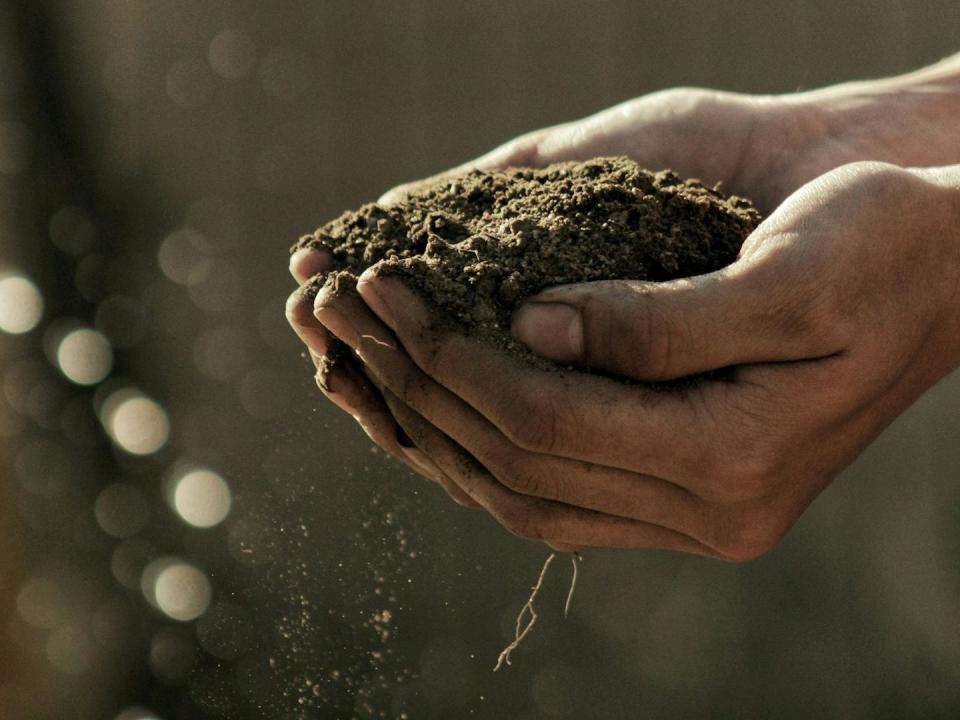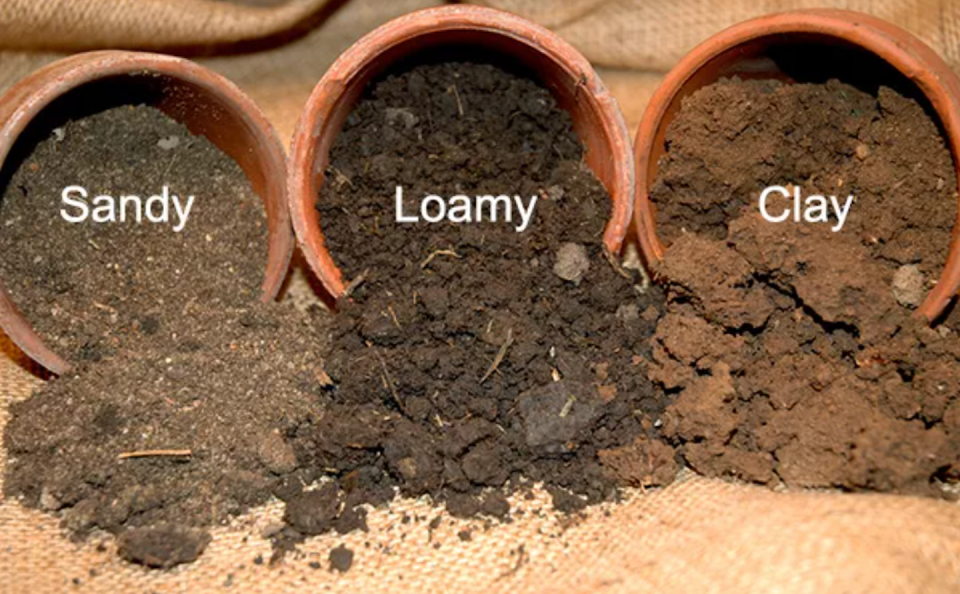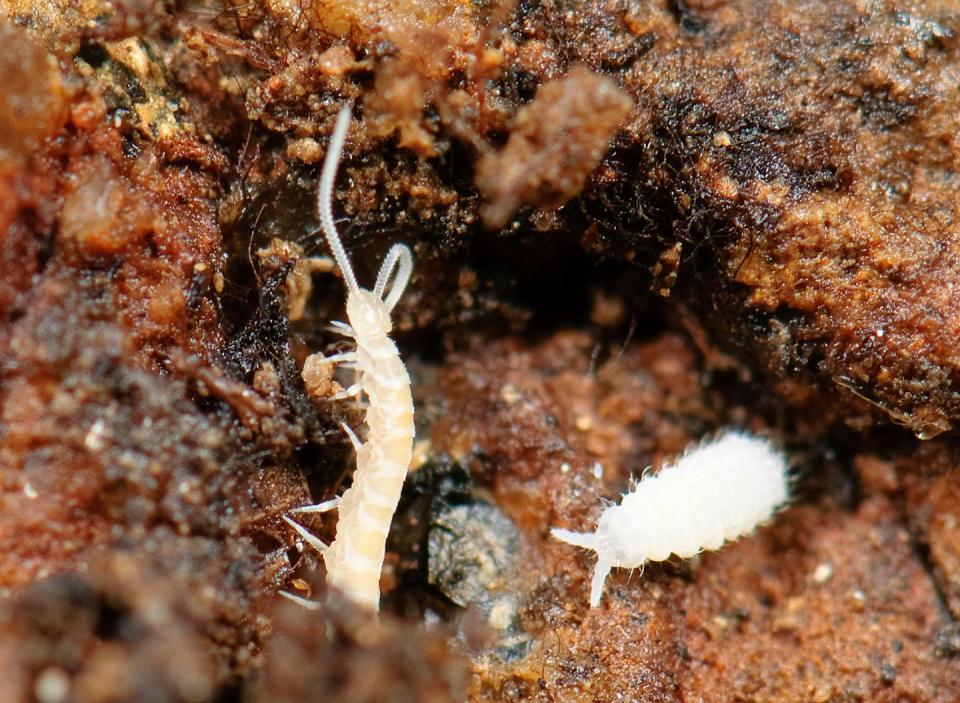
Curious Kids is a series for children of all ages. If you have a question you’d like an expert to answer, send it to curiouskids@theconversation.com.
What is dirt? – Belle and Ryatt, ages 7 and 5, Keystone, South Dakota
When you think of dirt, you might think of rock dust on your pants. But there’s so much more going on in the soil beneath our feet.
When I started examining the soil, I was amazed at how much of it was alive. The soil is teeming with life, not just the worms you see on rainy days.
Keeping this living world healthy is crucial for food, forests and flowers to grow, and soil-dwelling animals to thrive. Let’s take a closer look at what’s going on below and how they work together.


rocky part of the soil
If you pick up a handful of dry soil, the basic dirt you feel in your hand is actually tiny pieces of eroded rock. These small pieces have been eroded from larger rocks over millions of years.
The balance of these particles is important for how well the soil can retain water and the nutrients that plants need to thrive.
For example, since the rock grains of sandy soil are larger, they will be loose and can be easily washed away. It does not retain much water. Often clay soil is finer and more compact, making it harder for plants to access moisture. In between these two is silt, a mixture of rock dust and minerals often found in fertile flood plains.
Some of the most fertile soils have a good balance of sand, clay and silt. This combination, along with the remains of dead plants and animals, helps the soil retain water, allowing plants to access that water and minimizing erosion from wind or rain.


Writhing, gnawing parts of the soil
Among all these rock particles, there is a world of living things, each busy doing its own thing.
To get an idea of how many creatures there are, imagine this: There are more than 1,000 species of animals at the zoo in Omaha, Nebraska. But if you take a small spoonful of soil from your backyard, it will likely contain at least 10,000 species and about a billion living microscopic cells.
Many of these species are still largely a mystery. Scientists don’t know much about them or what they do in the soil. In fact, most soil species do not even have an official scientific name. But each plays some kind of role in the broader soil ecosystem, including producing the nutrients plants need to grow.


Imagine a leaf falling from a tree in late autumn.
This leaf contains many nutrients that plants need, such as nitrogen, potassium and phosphorus. There is also a lot of carbon in the leaf, which retains energy that other organisms such as bacteria and fungi can use.
The leaf itself is, of course, too large for a plant to grasp it with its roots. However, that leaf can be broken into smaller and smaller pieces. This process in which plant and animal tissue breaks down is called decomposition.
When the leaf first falls to the ground, arthropods such as insects, mites and collemboli break down the tissue, breaking the leaf into smaller pieces. Then a worm may come along and eat one of the smaller pieces, breaking it down even further in its digestive tract.
Now the broken leaf is small enough for germs to get inside. Bacteria and fungi secrete enzymes into the soil that break down organic matter into even smaller pieces. If enough microbes are active, eventually this organic material will break down enough to be water soluble and taken up by the plants that need it.
There are many small animals that consume bacteria and fungi, such as nematodes and amoebas, to assist in this process. There are also predatory nematodes that feed on other nematodes to ensure they don’t multiply too much, so everything stays as balanced as possible.
This is a highly complex food web of species interacting with each other in a delicate balance.
While some fungi and bacteria can harm plants, there are also many species that are thought to be beneficial. In fact, they may be the key to figuring out how to grow enough crops to feed everyone without disturbing or overloading the soil.
Finding your soil type
Scientists have named more than 20,000 different unique soil types. If you’re curious about soil and dirt in your area, the University of California, Davis has a website where you can learn more about local soils and their chemical and physical properties.
Caring for soil to increase benefits and minimize harm to living things takes work, but it is necessary to keep soil healthy and grow food for the future.
Hello curious kids! Have a question you want an expert to answer? Ask an adult to send your question to CuriousKidsUS@theconversation.com. Please tell us your name, age and city of residence.
Since curiosity has no age, adults, let us know what you are wondering about. We won’t be able to answer every question, but we will do our best.
This article is republished from The Conversation, an independent, nonprofit news organization providing facts and authoritative analysis to help you understand our complex world. Written by Brian Darby University of North Dakota
Read more:
Brian Darby receives funding from the United States Department of Agriculture.